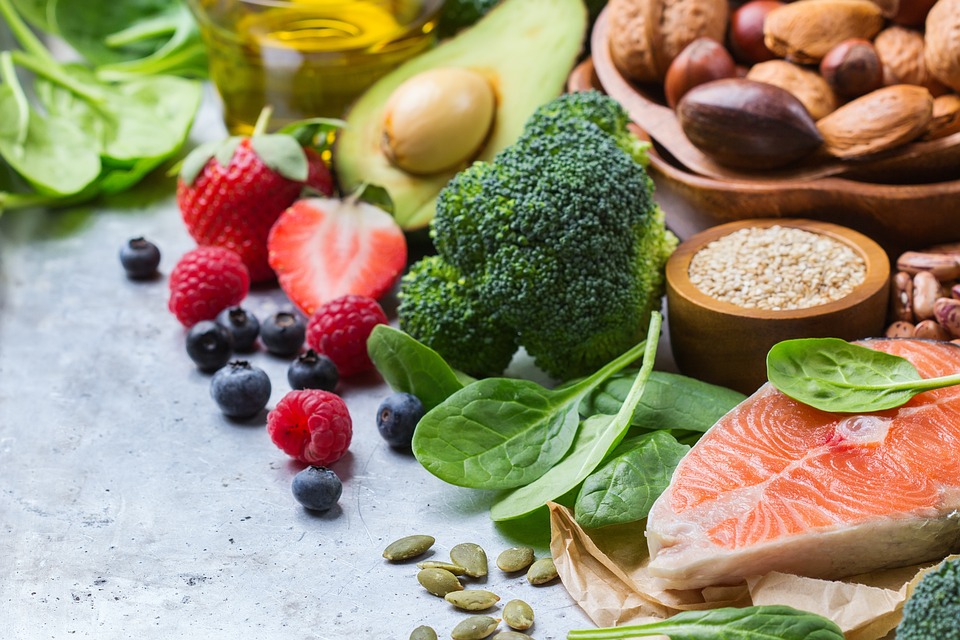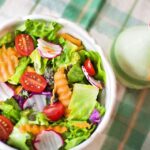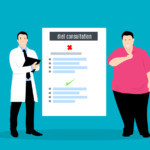Many of us want to lose weight and wear clothes from a few years ago. I don’t know about you, but I always end up making a New Year’s resolution to eat healthier, and every year I lose motivation for it.
This is not a question of willpower or discipline. The biggest reason we are not able to stick to our resolutions is because we try to change too many things at once.
The following is a four-step process to design your own personalized healthy eating plan.
3 principles of a healthy eating plan
The three key principles to keep in mind while building a healthy diet are: all that we know about physical and mental health, what we know about the nutrients we need, and choosing foods that we enjoy.
Principle #1 – Balance physical and mental health
The first principle is that mental happiness is more important than physical happiness. Our relationship with food can vary greatly, from intense dislike to complete adoration.
At the other end of the spectrum, we might be feeling indifferent about food, not really caring what we put into our bodies. We might be feeling anxious and guilty about food choices all the time or we might be feeling indifferent about food and not caring what we put into our bodies. We may all eat too much from time to time and it may be common to eat too much to make ourselves feel better. If you want to lose weight, you should focus on developing a healthier emotional connection with food first. [2]
If you’re not happy with your weight or clothes size, you may be more likely to developing binge or emotional eating. Before fixating on losing weight as a means to improving your health, consider how much happier you would be without preoccupying yourself with your weight. If you have a great family, friends, and career, then shedding a few pounds should not be the primary focus of your happiness. If your weight is lowering your self-worth, then why are you letting it?
If you have a good relationship with food, then you can move on to the next step.
Principle #2 – Long term and sustainable
The second principle is to design an easy-to-follow plan that can become part of your daily routine, rather than something that requires a lot of effort to stick to.
We don’t want to have to diet for the rest of our lives. We want to find a way of eating and living that works for us. We can only fit healthier eating into our lives if we integrate it into our daily routine instead of completely changing our lifestyles. The main reason why following a weight loss plan from the internet is not sustainable is because it is not tailored specifically for you. Your best chance of finding a method that works for you is to create a customized plan.
We’ve learned that we have to put in a lot of effort to eat right and that we won’t be successful without it. Companies and social media platforms that profit from dieting and weight loss sell us the idea that we need to diet to be healthy and happy. The diet industry is worth billions of dollars worldwide.
essentially, if you want to maintain a healthy diet long-term, make it part of your daily routine.
Principle #3 – Minimize deprivation
One of the most important principles is to minimize feelings of deprivation. This means being able to eat all of our favorite things like cookies, chocolates and chips without any restrictions and without feeling guilty. Eating out at restaurants, going out with friends, and having Friday night drinks are all social activities.
Food is not just physical fuel for the body. It is also a source of pleasure, culture, and social interaction. Food has the ability to bring people together and by using it in this way, we can feel happier. Food that we love refreshes us emotionally and makes us happier. By accepting all the aspects of food that involve love, we can have a healthier and happier life.
Your personalized healthy eating plan
Let’s design a healthy eating plan that works for you by incorporating the three principles.
1. Rate your relationship with food with the following questions:
- Do you think about food — what to eat, what not to eat and have cravings more times than not?
- Do you feel guilty when you eat cake, chocolate or chips and do you try to punish yourself by trying to diet even more strictly the next day?
- Do you feel out of control around food and regularly overeat past fullness?
- Do you wake up wondering when you can lose that tummy and does your mood depend on how well your pants fit for the day?
If you are feeling anxious or unhappy around food, then you should learn how to feel more relaxed and happy around food before moving onto the following steps.
2. To feel good in your body and eat healthy, use the ancient principle of “Hara hachi Bu” or “Eat up to 80% full”.
In Asian cultures like Japanese, Chinese and Indian, it is common to eat until you are just satisfied. You can transition from where you are today to being 80% full by getting in touch with your physical hunger and fullness cues. You should start by eating slowly and notice how full your stomach feels. Once you’re satisfied, you can stop eating.
P.S. Starting out may be difficult, especially for those who emotional or binge eat and use food as a way to cope. It is better to acknowledge feelings of hunger and eat until you are 80% full rather than try to practice restraint and end up binging later.
3. Build a healthy and happy diet with foods you love.
Start with a balanced plate for main meals consisting of:
- 1-2 palm-sized servings of protein
- 2 fist-size portions colorful vegetables
- 1-2 cupped-hand size portion of grains or fruits.
Women can start at a lower number on the scale while men can start at a higher number. If you can’t finish your food before you’re 80% full, then pack it up as leftovers.
If you’re not too full, you might want to have a snack like a muffin. Go for it. Craving some chocolate – don’t hold yourself back. When you eat mindfully and enjoy your food, you will find that you are satisfied with less food and do not feel guilty.
P.S.: Eating this way does two things. Protein and vegetables will help you stay alert and avoid the fogginess so common after 3pm. If you’re not constantly thinking about the foods you’re not supposed to have, you’ll be less likely to crave them and overeat.
4. Start small and build on
If making the transition from step 2 to step 3 is a huge jump, don’t try to do it all at once. The key to successful healthy living is to incorporate small healthy habits into your lifestyle that gradually have a cumulative effect.
If you want to start eating healthier, a good place to start is by adding some vegetables to your lunch sandwich, and after a couple weeks, eating eggs with your breakfast instead of muffins. If you don’t want to cook, you can buy a chopped salad at the supermarket.
Maintain a healthy lifestyle by keeping things simple. Creating and following a healthy routine can become part of your daily life if you make it easy on yourself.
BONUS: What is the Noom Diet and Can it help you Lose Weight?
Losing weight can be tough for a lot of people, especially if they don’t have anyone to help them out. More people than ever are willing to experiment with weight loss methods, despite the expense of personal trainers. An app that tracks your macros or your workouts can be a great help to your fitness goals. You may have heard of Noom from a positive review, and are wondering what it is all about.
Noom is a fitness and weight-loss program that promises help users to break the cycle of yo-yo dieting and achieve more sustainable long term results. Noom’s overarching goal is to help people lead healthier lifestyles, and it does this by providing comprehensive resources and support that go beyond conventional diet and exercise plans. The Noom app helps you lose weight by teaching you healthy habits instead of telling you what exercises to do or what to eat.
After you fill out your goals, Noom will give you a recommended calorie intake to hit each day. The app will also give you tips on how to change your diet and fitness routine for the better. The app uses a color-coded database to categorize food items based on how nutrient-dense they are. Some say that the daily calorie goal is too low and that the food labeling might cause disordered eating, especially for those with a history of an eating disorder.
The Noom app is a weight loss plan that is different from other weight loss plans. It can help you lose weight by tracking your food and activity, and providing support and motivation. There are some reasons that dietitians think that the keto diet could be effective, but there are also some negative aspects to it.
First, what is Noom exactly?
Noom promises that it will be the only weight-loss program that you will ever need, based on what is said on its website. This app is like having a personal trainer, nutritionist, and health coach all on your phone.
Noom is different from other apps because it focuses on making changes to behaviour surrounding dieting and weight loss. The app can tell you which foods are the best for you to eat. This app does not aim to make users afraid of certain foods, but rather to educate them on how to make balanced choices and why the app recommends certain foods over others. The app also provides you with information on healthy habits and allows you to rate your motivation. After some time, the app will test you on the information it has provided.
Although the app may seem like it would be time-consuming (having to read and take quizzes throughout the day), it could actually be helpful in achieving long-term weight loss. The app provides important information on losing weight sustainably through measures such as reducing calorie intake and increasing physical activity.
In addition to rewards, you can also get help from others and be held accountable for your success.
What can you eat on Noom?
While Noom doesn’t outright forbid certain foods, it uses a color-coding system to help you make choices that will either support or impede your progress towards weight loss. Green foods are generally considered the most helpful, yellow foods are ok in moderation, and orange foods should be eaten sparingly as they are less likely to support your goal.
Ideally, your daily diet should consist of 30 percent green foods, 45 percent yellow foods, and 25 percent orange foods.
Green foods are the best for you because they have the least amount of calories and contain a high concentration of nutrients. Yellow foods tend to be higher in calories, but this doesn’t mean they’re necessarily bad for you. For example, meats and dairy products are typically yellow. Foods that are orange in color tend to be high in calories but low in nutrients.
The app is trying to make you aware that orange foods are high in calories and less filling, so you’ll be more likely to stay within your daily calorie goal.
Examples of green foods include the following:
- Apples
- Bananas
- Berries
- Egg whites
- Non-fat dairy products
- Peppers
- Quinoa
- Spinach
- Whole-grain bread
Foods that are considered yellow include the following:
- Avocado
- Beans
- Black beans
- Chicken
- Salmon
- Whole eggs
Orange foods include things like:
- Beef
- Burgers
- Cakes
- French fries
- Full-fat dairy
- Nuts
- Nut butter
- Olive oil
- Seeds
What does Noom actually do to help with weight loss?
The Noom app helps you stay accountable for your choices and encourages you to make wise decisions. Noom does not provide a daily menu or food program to follow. The app does not give you a list of pre-determined foods to choose from. Instead, it asks for information on everything you eat and uses traffic light colors (red, green, yellow) to help you understand how healthy your choices are.
Noom may support weight loss because they provide education on mindful eating and optional tracking tools for food and exercise, as well as addressing mental health. The company Syn is talking about takes a scientific approach to helping people understand their relationship to food, and provides a personal coach for support during the program.



